Industrial Plants Fire Protection Systems Design: Strategies, Regulations and Best Practices
Ing. José Félix Acevedo B.
3/22/20255 min read
Introduction
The design of a fire protection system in industrial plants is a complex process that begins from the stage of layout and implementation of equipment. Although the general principles apply to various facilities, in this case we will analyze a fuel reception storage and delivery plant. The design strategy is based on the segregation and separation of equipment, the identification of fire hazards and the selection of passive and active protections to mitigate risks. The main phases of the design are described below.
Strategy of Segregation and Separation of Equipment
From the initial stage of the layout, it is essential to apply segregation and separation principles to minimize the spread of fires. To this end, the following should be considered:
Equipment separation tables to minimize fire consequences.
Location of storage tanks, pump rooms, administrative buildings, and other key facilities.
Compliance with standards such as NFPA 30 (storage of flammable and combustible liquids).
Consideration of internal equipment separation standards used by some oil companies and industrial plants, such as PDVSA and Pemex.
Use of the CCPS (Center for Chemical Process Safety) equipment separation tables, which are very useful when locating equipment according to the risk of fire and explosions.
Equipment Identification and Fire Hazards
Each piece of equipment present in the plant must be identified and evaluated based on its potential to generate fires. In a fuel reception, storage and Delivery plant, the main areas and equipment are:
Reception and Delivery Systems:
Reception system by pipeline.
Multi-pipeline Delivery System.
Truck reception bays.
Trucks loading bays.
Rail tank cars reception and loading.
LPG truck loading bays.
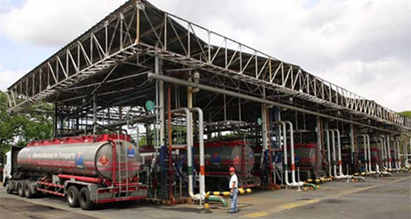

Fuel Storage:
Diesel storage tanks.
Premium gasoline storage tanks.
Magna gasoline storage tanks.
Ethanol/MTBE storage tanks.
Jet fuel storage tanks (Jet A1).
LPG storage.
Oily water handling and slope/interface storage/interface metering pumps.


Pump Areas:
Trucks reception pumps.
Truck loading pumps.
Rail tank cars loading pumps.
Rail tank cars reception pumps.
LPG truck loading pumps.
Electrical Buildings:
Electrical substation.
Motor Control Center (CCM).
Fire Protection System:
Two fire water storage tanks, to ensure availability in case of maintenance.
Fire water pump room.
Bladder type foam concentrate tanks for feeding the firefighting foam system.
Other Areas:
Administrative areas and parking lots.
Maintenance workshops and compressors.
Material storage area.
Identification of Fire Scenarios
The different fire scenarios that may occur must be analyzed, such as:
Fires in storage tanks.
Fires in fuel spills.
Explosions in storage and Delivery systems, including BLEVE (Boiling Liquid Expanding Vapor Explosion), VCE (Vapor Cloud Explosion) and Fireball, depending on the nature of the fuel and operating conditions.
Fires in electrical and process equipment.
Quantitative Risk Assessment (QRA) and HAZOP studies to validate scenarios.
Fire Protection
a) Passive Protections
Passive protections seek to prevent the spread of fire and reduce its impact, including:
Separation between equipment.
Fire walls according to NFPA 221.
Fireproofing coatings for metal structures.
Containment dikes around tanks in accordance with NFPA 30.
Classification of electrical areas to prevent ignition sources in hazardous areas, per NFPA 497 and API RP 500.
b) Active Protections
Active guards are response systems that act in the event of fire:
Foam Fire Systems (per NFPA 11): Used for firefighting in the following equipment and areas:
o Interphase tank.
o Ethanol storage tanks.
o Jet A1 storage tanks.
o Diesel storage tanks.
o Premium gasoline and magna gasoline storage tanks.
o TV-0503 oily water storage tank.
o Delivery and reception islands for trucks.
o Delivery and reception area for tank cars.
o Fuel vapour recovery area, whose fire protection must comply with regulations such as NFPA 30 and API 2021, to ensure safety in the handling of flammable vapors.
o Pump rooms for Delivery and reception of fuel.
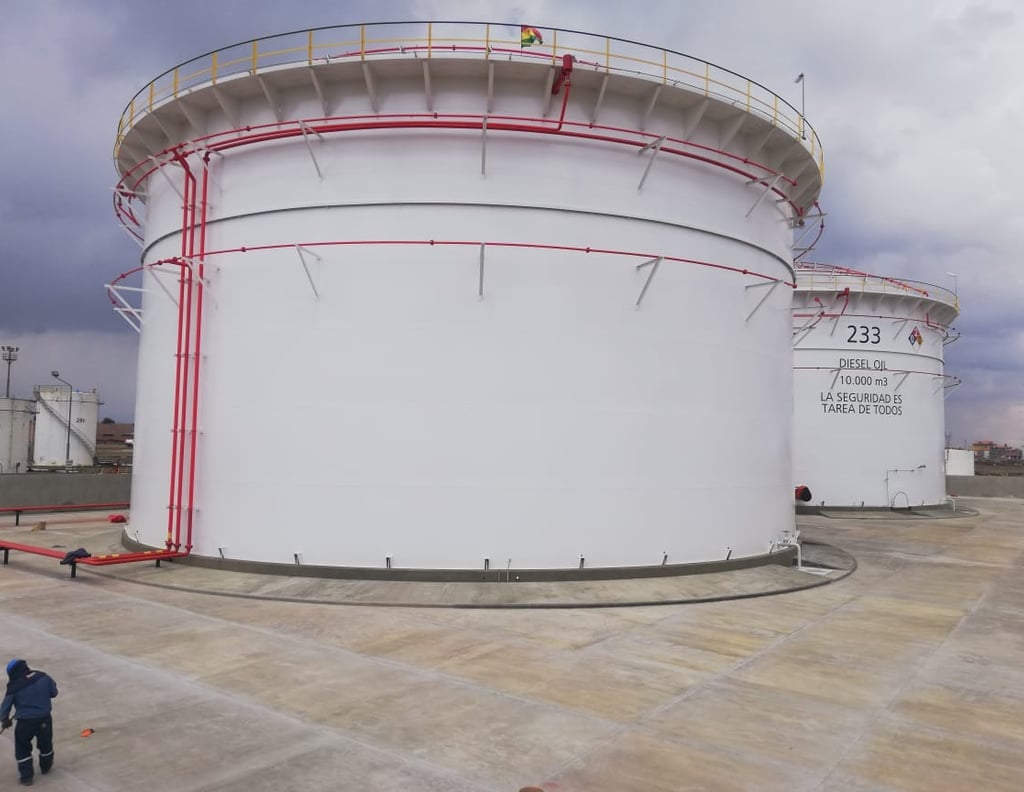

Cooling Water (per NFPA 15): Will be used in the tank area with sprinkler systems on the tank walls and, when roofs need to be cooled, monitors will be used. The tanks that will have sprinkler systems are:
o Interphase tank.
o Ethanol storage tanks.
o Jet A1 storage tanks.
o Diesel storage tanks.
o Premium gasoline and magna gasoline storage tanks.
o LPG storage tanks.
o LPG truck Delivery area.
o LPG Delivery pumps.
Portable Fire Extinguishers (per NFPA 10): Will be installed in various areas of the terminal, including:
o Buildings:
§ Offices.
§ Control Room.
§ Workshop.
§ Compressor Room.
§ Billing.
§ Motor Control Center (MCC).
§ Treatment plant.
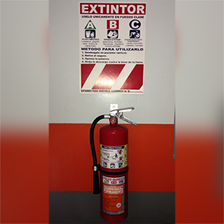

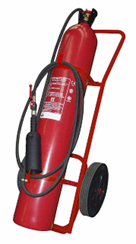

Hidrantes y Monitores:
La red de agua contra incendios contará con hidrantes y monitores de agua y espuma, distribuidos según el análisis de riesgos en la ingeniería de detalles.
Las edificaciones dispondrán de cajas de mangueras conforme con la norma NFPA 14.
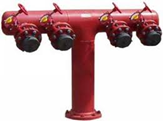


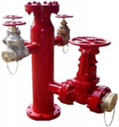
Clean Agents (according to NFPA 2001):
The control room and the Motor Control Centre (MCC) will have a total flooding system with clean agent for the protection of the control equipment.
Reference Standards
The design of the fire system must be based on recognized standards, such as:
NFPA 30: Storage of Flammable and Combustible Liquids.
NFPA 11: Low, medium, and high expansion foam systems used for fire protection in tanks and fuel storage areas.: Low, medium, and high expansion foam systems.
NFPA 13 and NFPA 15: Automatic Sprinkler Systems and Water Spray Sprinkler Systems: Automatic sprinkler Systems.
NFPA 20: Installation of Stationary Fire Protection Pumps.
NFPA 24: Installation of Private Fire Water Hydraulic Systems.
NFPA 72: Fire Detection and Alarm Systems.
CCPS: Equipment separation tables to minimize fire and explosion risks.
API 2001: Fire protection in hydrocarbon storage facilities.
API 2021: Risk Management and Safety Planning in Flammable Liquid Storage Facilities.
API 2030: Hazard Identification and Assessment in Flammable Liquid Storage Facilities.
API 2510: Design and construction of facilities for the storage of liquefied petroleum gas (LPG).
Use of Regulations and Customer Specifications
This guide should be used in conjunction with customer specifications and other relevant regulations to ensure a proper design tailored to the particular needs of each facility.
Conclusions
The design of a fire protection system in industrial plants must consider from the initial stage of layout to the selection of passive and active protections, complying with international regulations. In the specific case of a fuel storage and Delivery plant, the application of equipment separation tables, both international regulations and internal standards of the oil industry, is key. The proper implementation of these strategies is essential to minimize the impact of potential fires and ensure the safety of the plant and its personnel.
Details
engineering
info@aceinteca.com
© 2024. All rights reserved.
Technical Information for Tank Equipment Courtesy of World Bridge Industrial Co. Ltd.
Technical Information for Tanks Protection Devices Courtesy of Korea Steel Power Corp.
Technical Information for Bolted Tanks Courtesy of Center Enamel.
Glass Fused Steel Bolted Tanks
Stainless Steel Bolted Bolted Tanks
Aluminum Suspended Deck for Cryogenic Tanks.
Aluminum Rolling Ladder for External Floating Roofs
WhatsApp +58 416 6289796
